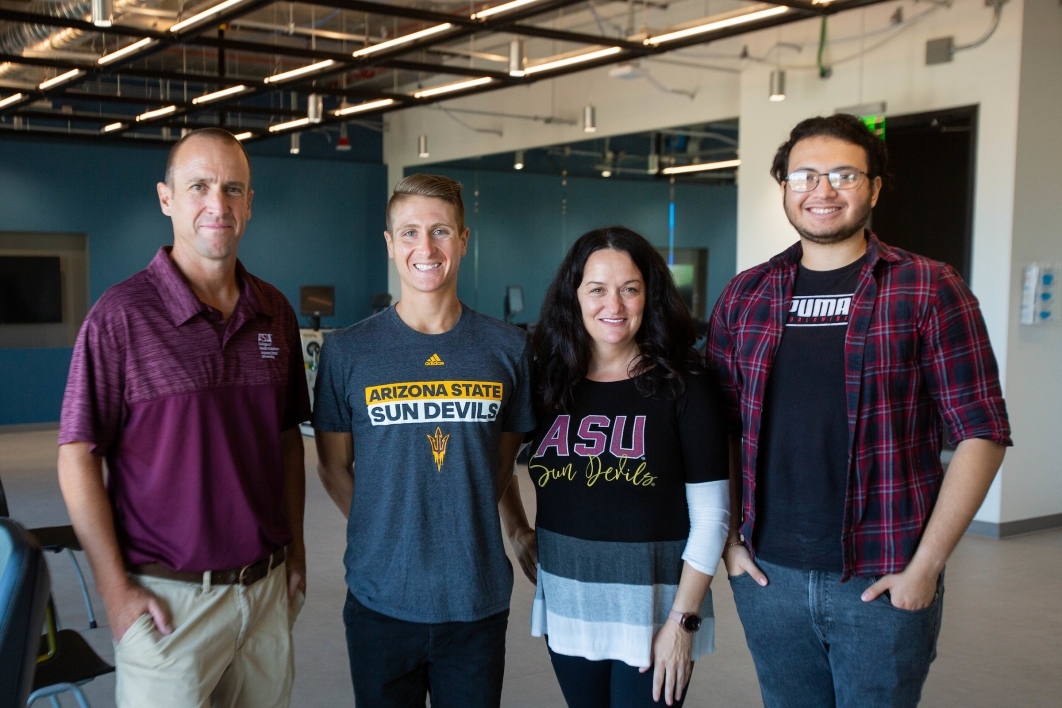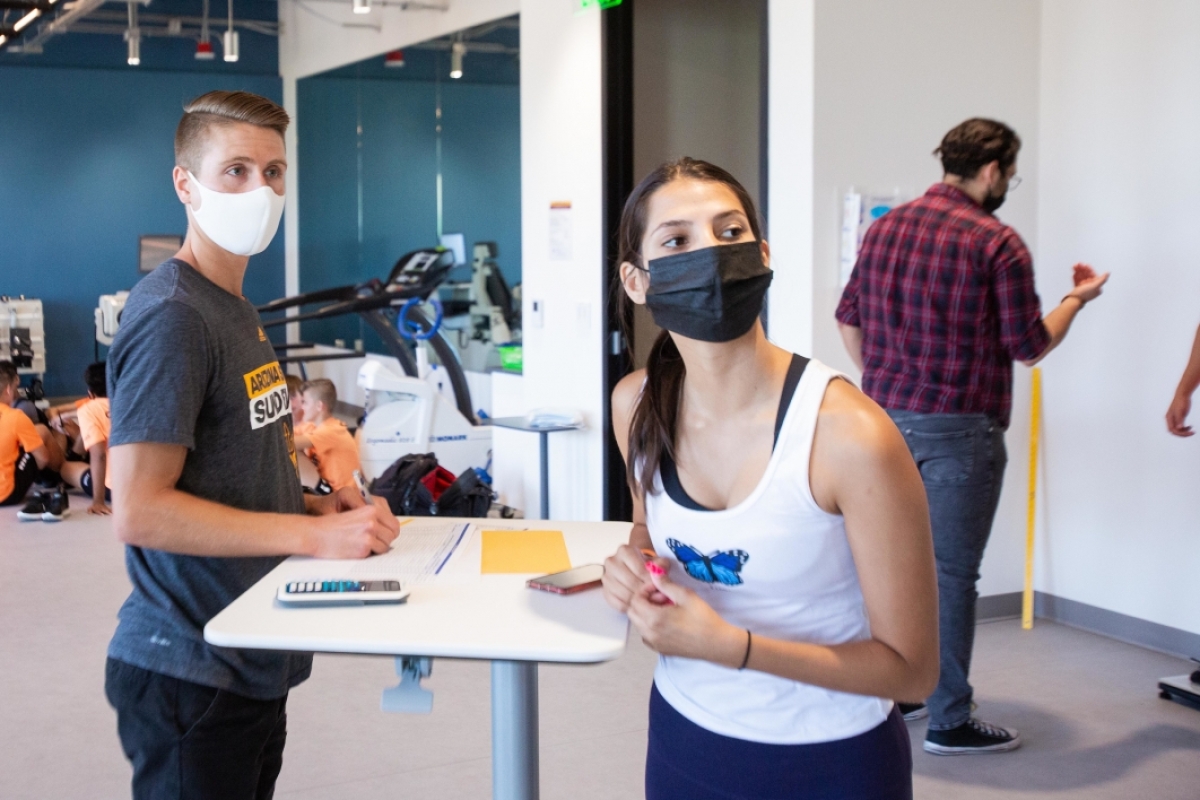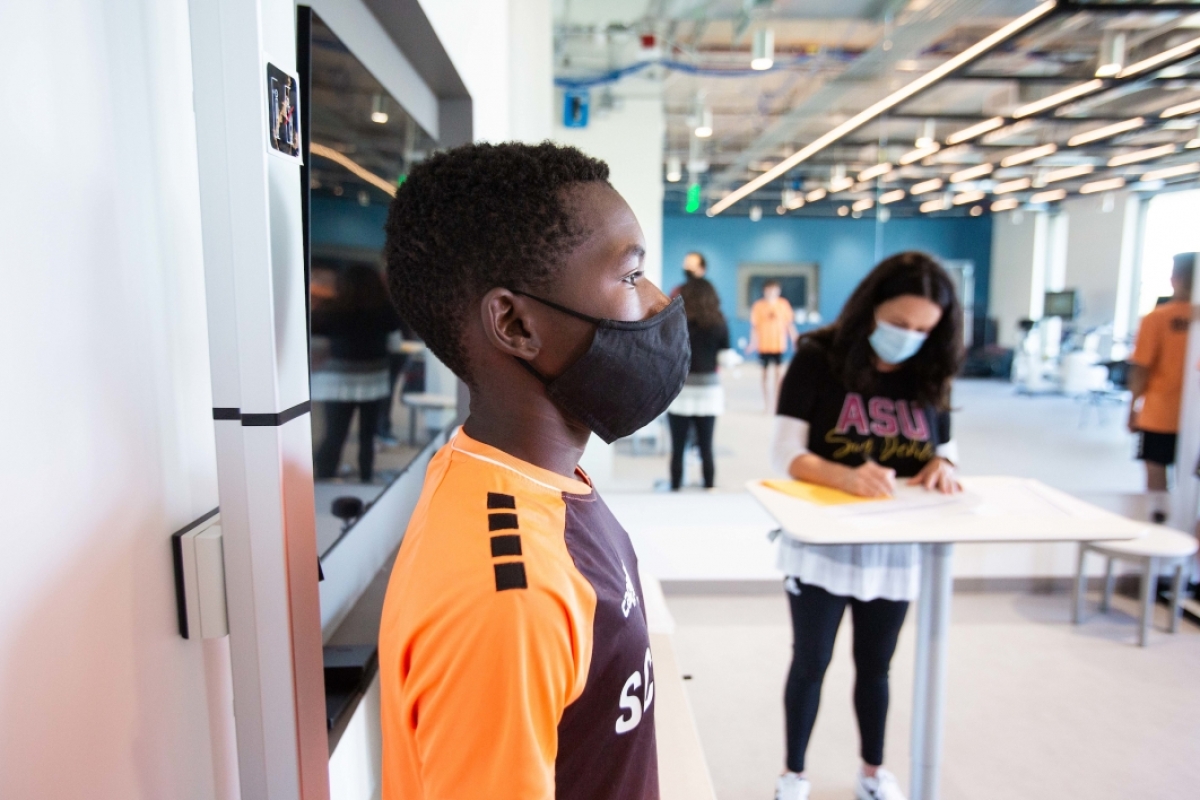Partnership with youth sports club brings community into new ASU research facility
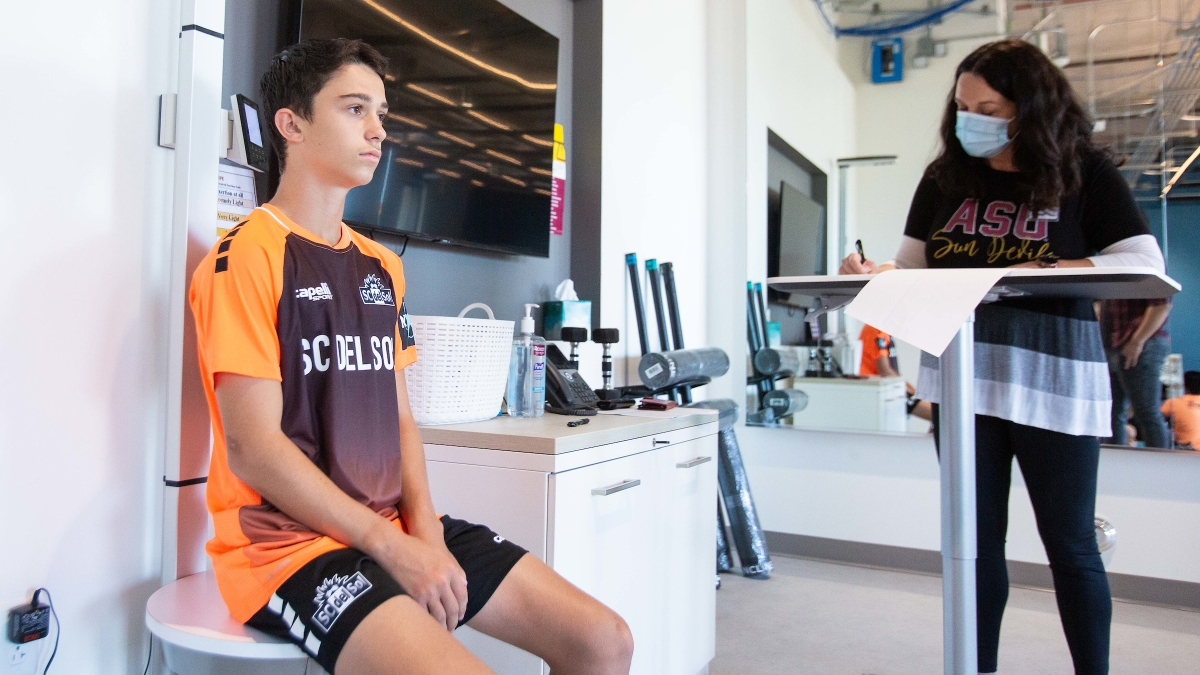
It’s not often in sports you get a win-win situation, but that was the case this past weekend when members of the SC del Sol soccer club paid a visit to the recently opened Wexford Innovation Center in downtown Phoenix.
Waiting for them when they arrived were College of Health Solutions Associate Professor Jason Siegler and a crew of ASU students ready to record their measurements as part of a new community partnership between the soccer club and the university that aims to give the players a chance to improve their game while also providing hands-on research opportunities for students.
“Wexford just opened and is kind of the jewel in the Phoenix Biomedical Campus crown at the moment,” said Siegler, who joined ASU last December. “Since the whole purpose of the space is to be a place where the universities and the community come together to innovate and create opportunities for research that advances economic growth, having a community organization here right at the beginning of its opening already using the building is a great showcase of its purpose.”
Up the staircase from the main lobby, in the bright, gleaming exercise physiology lab on the second floor, exercise and wellness master’s degree student Carson Gantzer stood, clipboard in hand, jotting down numbers as they were called out by undergraduates there to lend a helping hand.
“We’re recording the players' standing height, seated height and weight,” Gantzer said. Taken together and entered into a formula, those three measurements are used as part of a technique called bio-banding, which groups players together based on their physical maturity and biological age rather than their birth year.
“If you can imagine a 13-year-old who has totally gone through puberty and a 13-year-old that is a little bit behind, there is a stark difference physically,” Gantzer explained. “Neither is going to benefit from playing against each other, and this method sort of levels the playing field by allowing those who haven’t hit their growth spurt yet to level down if they choose.
“It’s also great for research purposes, because we could potentially look at how implementing different training programming based on where each player is at physically might make a difference in their performance.”
While bio-banding is still a relatively new concept in U.S. sports, Siegler, whose academic career researching human exercise performance includes a decade in Australia and five years in the U.K., has seen how it has given players an edge abroad and wanted to bring that knowledge to help augment ASU’s existing sports science and performance programming.
“There have been arguments for toughening kids up and letting them play regardless of where they’re at physically, to build resilience,” he said. “But it’s also an issue when kids are getting cut from programs just because they’re maturing at a different speed. So working with SC del Sol is a great way for us to step in and showcase the lab and what the university has to offer.”
A couple of Siegler’s students will be working with the soccer club on applied projects throughout the year. The first semester, they will focus on embedding themselves in the teams and building relationships with the coaches and players. The second semester, they’ll focus on their projects.
Gantzer is hoping to look into strength building for specific muscles with the goal of reducing common injuries, such as torn hamstrings and ACLs.
“This partnership gives me an opportunity to build connections with a community organization so that when it comes time to do my applied project, they already know who I am and we have a relationship there,” he said. “And it could also lead to job prospects in the future.”
Siegler sees the fact that SC del Sol is a local organization as another positive.
“In the states especially, a lot of university programs want to partner with professional organizations rather than local ones,” he said. “But providing sport science support for a local organization can sometimes be better for students. It allows them to apply their knowledge in their own community and potentially even build a career path that will allow them to stay there.”
If the SC del Sol coaches' reactions to what they saw at Wexford over the weekend are any indication, Siegler may very well be onto something. Andy Ward, assistant executive director for SC del Sol’s Boys Academy, called the facilities “unbelievable” and said he is looking forward to how the organization can continue working with ASU in the future.
Top photo: SC del Sol soccer player David L. has his seated height measured by College of Health Solutions staffer Theresa Jorgensen as part of a community partnership between ASU and the soccer club, which aims to help the players improve their game while also providing hands-on research opportunities for students. Photo by Deanna Dent/ASU News
More Health and medicine
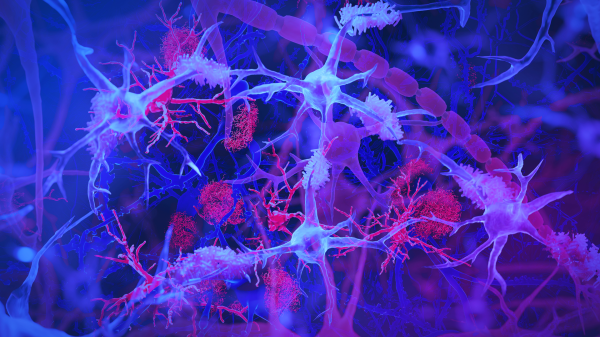
The surprising role of gut infection in Alzheimer’s disease
Arizona State University and Banner Alzheimer’s Institute researchers, along with their collaborators, have discovered a surprising link between a chronic gut infection caused by a common virus and…

ASU, University of Wisconsin partner to empower Black people to quit smoking
Arizona State University faculty at the College of Health Solutions are teaming up with the University of Wisconsin to determine which treatments work best to empower Black people to quit…

New book highlights physician wellness, burnout solutions
Health care professionals dedicate their lives to helping others, but the personal toll of their work often remains hidden.A new book, "Physician Wellness and Resilience: Narrative Prompts to Address…
